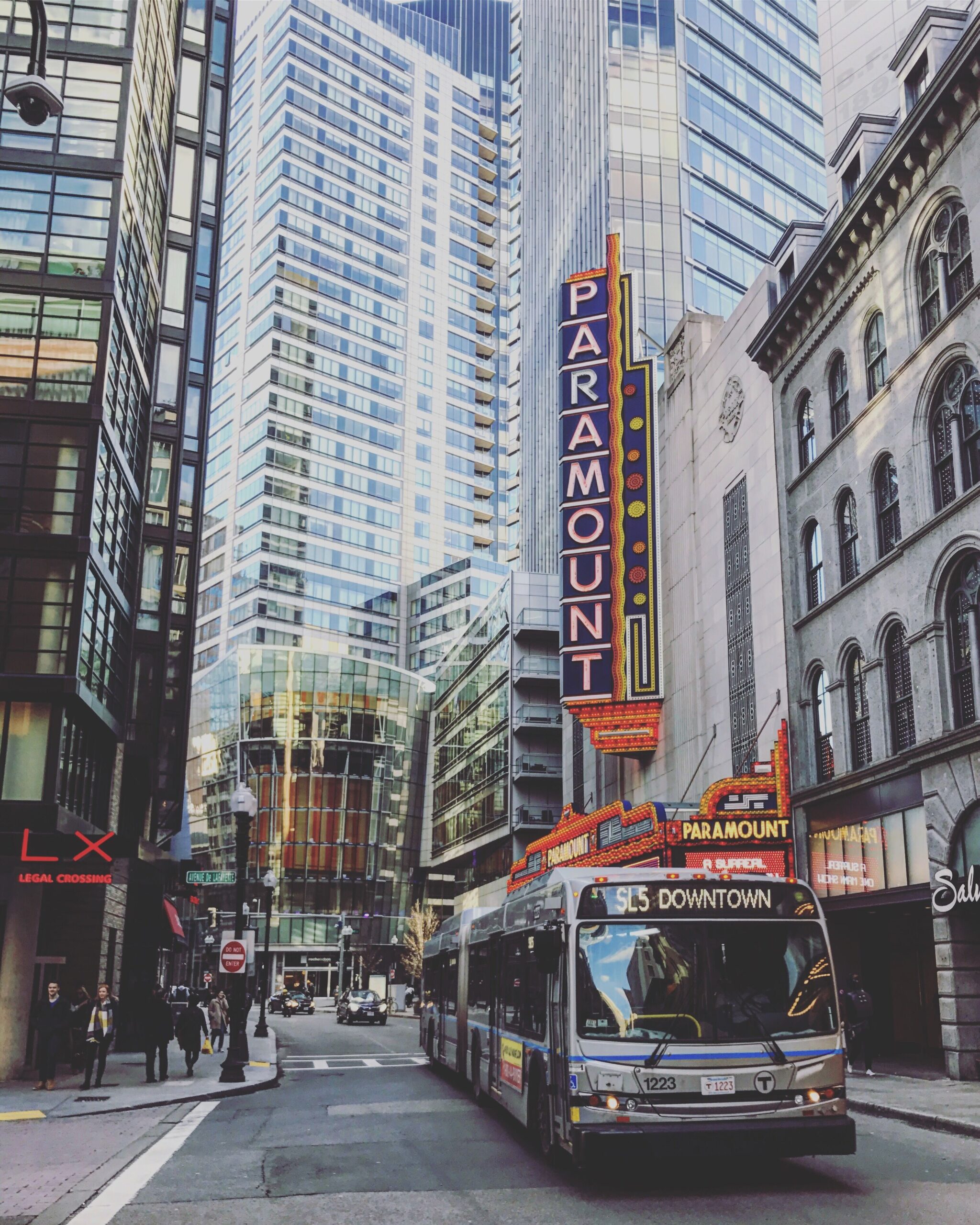If you have been following the trajectory of Barr’s Mobility program, you know that our goal is to modernize the state’s transportation system – and that we’ve been looking closely at the potential of bus rapid transit (BRT) to help meet that goal. Through the BostonBRT initiative, we’ve assembled technical teams to analyze the viability for the best corridors, brought decisionmakers and advocates to ride BRT systems that carry more people per day than all MBTA services combined, invited architects and designers to think about what future BRT stations could look like, and more. As a next step, and with the BostonBRT Advisory Committee’s guidance, we realized that we could do more…we could help the Boston region experience BRT.
To start, BostonBRT partnered with MassDOT and the MBTA to enhance the Silver Line. For two weeks in Spring 2017, on the Silver Line routes 4 and 5 that run from Dudley Square to Downtown, BostonBRT and MassDOT tested one of the five basic BRT elements – all-door boarding – to see if riders felt an impact on their Silver Line trips. Under regular conditions, all riders board through the bus front door only, which takes time at each stop, adding up over the entirety of a route. The all-door boarding demonstration allowed people to get on the bus using all three bus doors. So, did all-door boarding have an impact? And if yes, how much? Here’s a look at the commuting experience with all-door boarding:
Data from the MBTA and survey results from 900 riders during the demonstration showed us that:
All-door boarding dramatically improved the slowest bus trips. The worst trips – the ones you don’t forget – were considerably faster during the demo. The buses spent 30% less time at bus stops, saving up to a minute and a half of time over course of a bus trip. Although that’s only 90 seconds per trip – it makes a difference when added up commute after commute for riders, plus it offers the opportunity to get the buses back into service more quickly.
All-door boarding allowed for more buses to leave on time, and fewer delays at the busiest stops. With so many riders getting on the bus at the first and last stops on the Silver Line 4/5, one of every five buses starts a route late. By allowing riders to board the bus using all doors, more buses started their route on-time. This made the bus arrival times more predictable and accurate along the route, reducing rider wait time and providing a more reliable service.
All-door boarding had the biggest impact at the stops where a lot of people are getting on the bus. At the busy stops, boarding was 50% faster when using three doors instead of one. For the busiest stops along the route, this made a big difference, taking an average 42 seconds to board over 30 people and get the bus moving to the next stop—60% faster than during normal conditions! See the time savings documented in the video below.
Two of every three riders felt their trip was faster during the demo. All-door boarding is intended to make the boarding process faster, resulting in shorter travel times and an overall better experience. Given the unenforced dedicated lane, delays at traffic signals, and other factors, bus travel times during these two weeks did not vary significantly from typical days. Yet, a surprising finding was that 65% of riders reported that their trips felt faster. The survey responses indicated that riders value getting on and off the bus quickly, so all-door boarding resulted in a better experience for riders.
We were pleased with these findings, because we knew that the Silver Line, with its partial dedicated lanes and transit signal priority, is already a high performing route (you can expect an average local bus to show up on-time about 60% of the time, whereas the Silver Line routes are at about 80%). This demonstration confirmed our hypothesis: layering one new element of basic bus rapid transit to an existing route makes an overall slight positive impact. What would the rider experience look like if we continued the dedicated lane, improved the transit signal priority, and added platform-level boarding?
We hope to continue to answer this question and others as BostonBRT continues to partner with the MBTA, municipalities in Massachusetts, community and advocacy organizations, and others to test and experience the impacts BRT could have on our daily commutes.
Did you ride the Silver Line during the all-door boarding demonstration? Tell us what you thought, or follow us on social media to find out where to experience the next BRT demonstration in Greater Boston!




